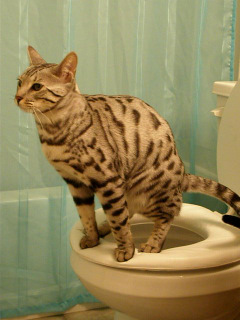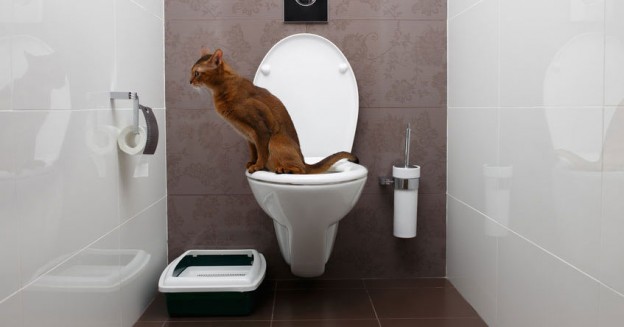Avoid Flush Cat Poop Down Your Toilet - Protect Your Plumbing Infrastructure
Avoid Flush Cat Poop Down Your Toilet - Protect Your Plumbing Infrastructure
Blog Article
We've unearthed this great article pertaining to How to Dispose of Cat Poop and Litter Without Plastic Bags down the page on the internet and concluded it made good sense to share it with you on this page.

Intro
As cat owners, it's important to bear in mind exactly how we deal with our feline friends' waste. While it might appear practical to purge pet cat poop down the bathroom, this method can have damaging consequences for both the environment and human health.
Ecological Impact
Purging feline poop presents damaging pathogens and parasites right into the water, presenting a significant danger to marine environments. These pollutants can adversely impact marine life and concession water quality.
Health Risks
Along with ecological problems, flushing feline waste can additionally present health and wellness risks to human beings. Pet cat feces might contain Toxoplasma gondii, a parasite that can create toxoplasmosis-- a potentially severe illness, particularly for expecting women and individuals with weakened immune systems.
Alternatives to Flushing
Luckily, there are safer and more responsible ways to dispose of feline poop. Consider the complying with choices:
1. Scoop and Dispose in Trash
The most usual approach of getting rid of feline poop is to scoop it right into a biodegradable bag and throw it in the garbage. Make sure to use a committed clutter scoop and dispose of the waste immediately.
2. Use Biodegradable Litter
Select naturally degradable feline clutter made from products such as corn or wheat. These litters are eco-friendly and can be safely dealt with in the garbage.
3. Bury in the Yard
If you have a backyard, think about hiding cat waste in a marked area far from veggie yards and water resources. Make certain to dig deep adequate to stop contamination of groundwater.
4. Install a Pet Waste Disposal System
Purchase a family pet garbage disposal system specifically designed for feline waste. These systems utilize enzymes to break down the waste, lowering odor and environmental effect.
Conclusion
Accountable family pet possession prolongs beyond supplying food and shelter-- it also includes appropriate waste management. By refraining from purging pet cat poop down the commode and choosing alternate disposal techniques, we can minimize our environmental impact and shield human health and wellness.
Why You Should NEVER Flush Cat Poop (and/or Litter) Down Your Toilet
The Problem with Litter
The main function of litter is to solidify and adhere to your cat’s waste. While this makes litter excellent for collecting cat poop and urine, it’s also the exact property that makes it a nightmare when flushed down the toilet.
Cat litter can and will clog pipes. There is non-clumping litter, but it’s still quite heavy and can build up in pipes. This is true even of supposed “flushable litter.”
The problems only compound when the litter is already clumped into cat waste. Toilet paper is among the more flushable things, and even too much of that will clog a toilet.
The Problem with Cat Poop
Sewers and septic systems are designed with human waste in mind. The microbes that help break down human waste don’t work on cat waste. Additionally, cat poop plays host to the parasite Toxoplasma gondii.
When flushed, this parasite can enter the environment in places it was never meant to, posing a risk to pregnant women, their unborn children, and other people with compromised immune systems. While it might not seem possible, flushing cat poop can indeed introduce this parasite to the public water supply.
These reasons are why, even if you’ve trained your cat to go on the toilet and flush, which is possible, it’s still not a good idea. Also, pregnant women and the immunocompromised shouldn’t change litter, either.
How to Handle Litter
The best way to handle litter is to simply put it in a plastic bag and place it in the trash. Avoiding environmental risks and possible plumbing damage is worth the extra effort.
You can also invest in devices that seal away your cat’s waste in a separate compartment, so you don’t have to change the litter nearly as often. They’re also safer for pet owners because they limit the possibility of Toxoplasma gondii exposure.
Disposing of litter the old-fashioned way will ensure you won’t have to worry about any issues that flushing the waste can potentially cause.
Take Care of Clogged Pipes with Stephens Plumbing, Heating & Air Conditioning
The reasons you should never flush cat poop down your toilet are numerous, but sometimes the inevitable happens despite your best efforts.
Stephens Plumbing, Heating & Air Conditioning is ready to help if you’re experiencing litter-blocked plumbing. Whether you need us in an emergency or want to schedule regular maintenance, we’re here for you.
https://www.stephensplumbing.net/bathroom-plumbing/never-flush-cat-poop-down-your-toilet/

Hopefully you liked our piece about How to Dispose of Cat Poop and Litter Without Plastic Bags. Thank you for finding the time to browse our article. Remember to take a moment to promote this blog entry if you liked it. I truly appreciate reading our article about How to Dispose of Cat Poop and Litter Without Plastic Bags.
Book Now! Report this page